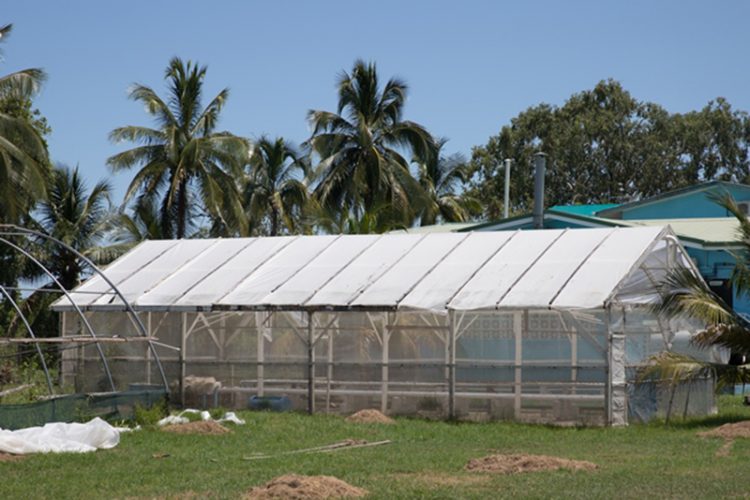Though a formal plan is yet to be made public, Guyana has made advances in its commitment to reduce its food import bill by 25% by 2025 and 13 items have been identified, according to Agriculture Minister Zulfikar Mustapha.
He related in a recent interview with Stabroek News that through trials and expansion of cultivation of fruits and vegetables, along with the rearing of livestock, poultry and fish, there is a push to meet the reduction goal.
“Guyana is advancing a lot of production and we have been making strides… continuing at this rate we should be able to start exporting to neighbouring countries like Trinidad and Tobago and Barbados probably by the end of the year,” the Minister stated.

Under the 25% by 2025 Initiative, countries in the Carib-bean Community (CARICOM) have committed to boost production of food to reduce the region’s importation food bill and reliance on the international market. The CARICOM region has a food importation bill of US$6B.
The move was started in a response to disruptions in the supply chain caused by the war between Russia and Ukraine, as well as the global pandemic.
Last year at the 2022 CARICOM Heads of Government Conference in Belize, the case was made to accelerate the 2005 “Framework for the repositioning of Caribbean agriculture.”
Member states being cognizant of the challenges in the region, which have resulted in a dramatic increase in the cost of food, exposing still further the region’s food insecurity due to its vulnerability to external influences and the impact of climate change, agreed to the plan.
Countries have since made commitments towards achieving the ambitious goal. It is unclear why Guyana, which has lead responsibility for agriculture, has not published a formal plan as yet.
Mustapha explained that they have identified 13 priority commodities to focus on in the 25% by 2025 programme.
The commodities identified are poultry, niche vegetables (onions, broccoli, carrots, cauliflower, red cabbage) corn, soybean, rice, meat (beef, mutton and goat), coconuts, wheat and meslin, fruit juices, shrimp, honey, spices (ginger and turmeric) and root crops (Irish potato, sweet potato, and yam).
“The region has been making very good progress in ramping up production and productivity in the various priority products. Guyana in particular which has responsibility for agriculture, agriculture diversification, and food security in the CARICOM quasi cabinet, has been aggressive in advancing its programme in this regard,” related Mustapha, who also heads the CARICOM Ministerial team on the programme.
While he highlighted the commodities that will be focused on, no timeframe has been specified for each commodity or the development of the priority products.
Nonetheless, Mustapha explained that from the brackish water shrimp project, they are moving to increase production from 50,000 tonnes to 83,000 monthly. He stated that this project has seen massive success and is encouraging to farmers. Start-ing this year, the new Vannamei Prawns Project is expected to become operational.
He pointed out too that the Agriculture and Innovation Entrepreneurship Programme spearheaded by President Irfaan Ali has also seen success. He stated that through the project, which utilises shade house technology for high-value crops, they have been able to cultivate lettuce, broccoli, red cabbage, and cauliflower among others. Once production moves into the commercial stage, Mustapha posited that there will be a reduction in importation but plans are already in place to expand the project this year to meet demands.
The Agriculture Minister also noted that they have commenced spice production in Region One, which has been earmarked to become the spice hub of the country.
“We have started ginger and turmeric production in Region One. There are about 76 farmers in the Hosororo/ Mabaruma area in this project and we have gotten the attention of others for turmeric cultivation in Port Kaituma… we are also looking at having black pepper produced in that region.”
Moreover, Mustapha pointed out that the National Agriculture Research and Education Institute (NAREI) is currently conducting trials on Irish potatoes on 12 acres of land. He noted that by June they are aiming to expand production by doubling the acreage for the trial.
In addition, the Minister referred to the corn and soya bean project currently in the trial phase at Tacama in the intermediate savannahs.
With poultry demand projected to increase, government has been working alongside a consortium of private farmers to make Guyana self-sufficient in the feed sector. Mustapha said with the results gathered from the trial to date, there will be further ramping up of production of corn and soya bean.
The Minister also pointed to the Black Belly Sheep project which is being undertaken in collaboration with Barbados which he said will aid in the achievement of the 25% by 2025 initiative to reduce mutton imports. Under the programme over 2,000 sheep are to be imported, with 1,000 already here and to be distributed in the coming months.
In a submission to CARICOM, it was pointed out that research and development for genetic improvement along with human resource, technical assistance, data management, and financing were critical areas of support needed to meet the production targets set by Guyana.
According to CARICOM, implementation of the CARICOM Agri-Food Systems Strategy in the member states is expected to help achieve the 25 by 2025 target, by focusing on priority crops and products such as poultry, corn, soya, meat (goat, sheep, beef), rice and niche vegetables.
For the period 2018 – 2020, CARICOM says that the top five importing countries in the region were:
1. Haiti – US$3.161 Billion
2. Jamaica – US$1.2 billion
3. Trinidad and Tobago – US$1.08 billion
4. Bahamas – US$555.6 million and
5. Barbados – US$407.6 million






